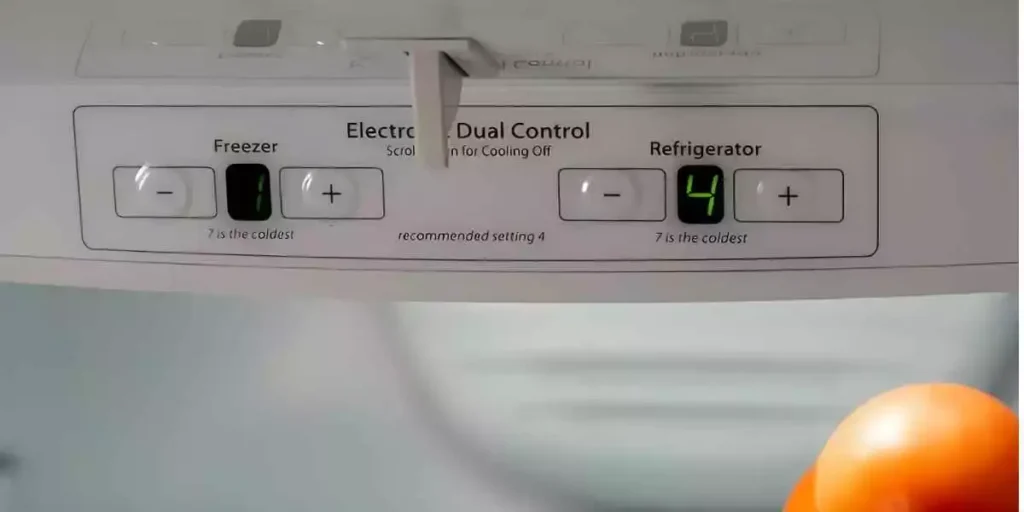Have you noticed your refrigerator feeling a bit warmer or cooler sometimes? Let’s put on our detective hats and investigate if it’s normal for the refrigerator temperature to fructify.
We’ll find out why temperatures fluctuate and what that means for your food.

Is It Normal For Refrigerator Temperature To Fluctuate?
Yes, it is normal for refrigerator temperature to fluctuate to a certain extent. The compressor in your refrigerator cycles on and off to maintain the desired temperature.
When the compressor is on, the temperature in the refrigerator will drop. When the compressor is off, the temperature will rise slightly. This is a normal part of the refrigeration process.
Factors Affecting Refrigerator Temperature Fluctuations
Impact of Ambient Temperature:
Think of your refrigerator as a busy worker trying to keep cool in a hot room. The warmer the room is, the more it needs to sweat (or, in this case, cool) to keep cool.
It’s the same for your fridge during hot seasons. The hot surrounding air makes your fridge work harder to keep things cool inside.
This extra work can cause the inside temperature to go up and down a lot.
Door Usage:
Now, imagine letting a gust of hot air into a cool room. It makes the room warmer, right? That’s what happens every time you open your refrigerator door.
Warm room air gets in, and the fridge has to work again to cool it down. And if you leave the door open for a long time, it’s like a big, warm wind blowing in.
Your fridge’s temperature can really bounce around a lot because of this.
How Overcrowding Impacts:

A fridge needs space to cool things down. It’s like a cool breeze blowing through a room.
Now, if you put a lot of things in that room, the breeze can’t get around so well.
It’s the same in your fridge. If it’s too full, the cool air can’t get to all the spots it needs to.
So, some spots get cooler than others, and the temperature can change a lot in different parts of the fridge.
Importance of Refrigerator Placement:
Where you put your fridge in your home can change how hard it works.
If it’s near something warm like an oven, a dishwasher, or even a sunny window, it’s like trying to stay cool in a hot room.
It has to work harder to keep the inside cool, and that can make the temperature inside the fridge change a lot.
Role of Temperature Control Settings:
The thermostat in your fridge is like the boss of the cooling system. It tells the fridge when to cool down and when it’s cool enough.
If you set it wrong, like too low, the fridge might turn on and off a lot.
Each time it turns on, the temperature can drop a lot, and then it rises again when it turns off. This can make the temperature go up and down a lot.
Significance of Door Seals:
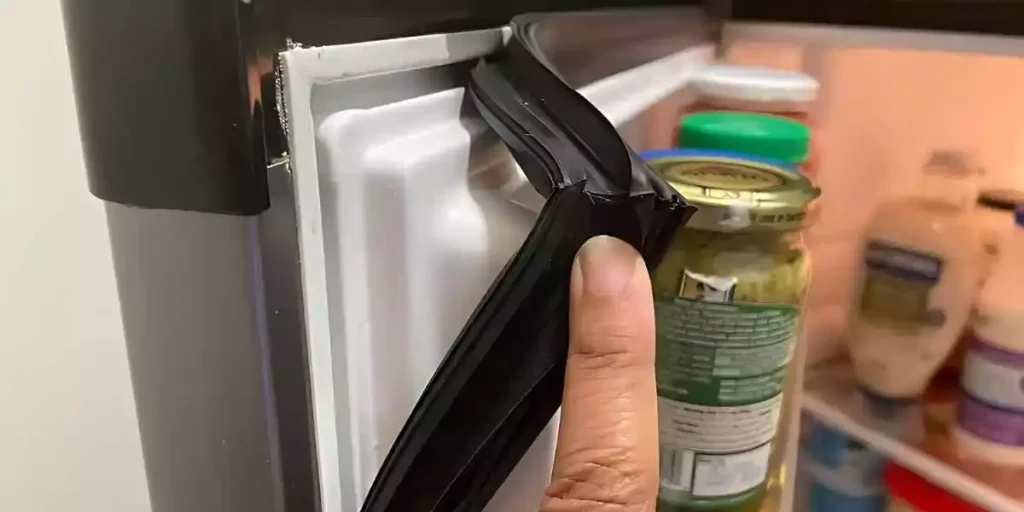
The seals on your fridge door are like a tight lid on a jar. They keep the cool air in and the warm air out. But if they get old or damaged, warm air can sneak in.
This is like letting a warm wind into a cool room, and it makes your fridge work harder to cool things down.
If the warm air keeps getting in, the temperature inside your fridge can change a lot.
Importance of Maintenance and Cleaning:
Keeping your fridge clean and well-cared for is like keeping a car in good shape. If you let dust or frost build-up, it’s like driving with flat tires.
It slows your fridge down and makes it hard to keep a steady temperature. Cleaning the inside and the parts on the back (the coils and vents) helps your fridge work well and keep a steady temperature.
Age and Condition of Refrigerator:
Old fridges can have a hard time keeping a steady temperature. It’s like an old car that breaks down a lot.
The parts don’t work as well as they used to, and that makes the temperature inside the fridge change a lot.
If your fridge is old and the temperature keeps changing, it might be time for a new one.
Potential Risks of Significant Temperature Fluctuations
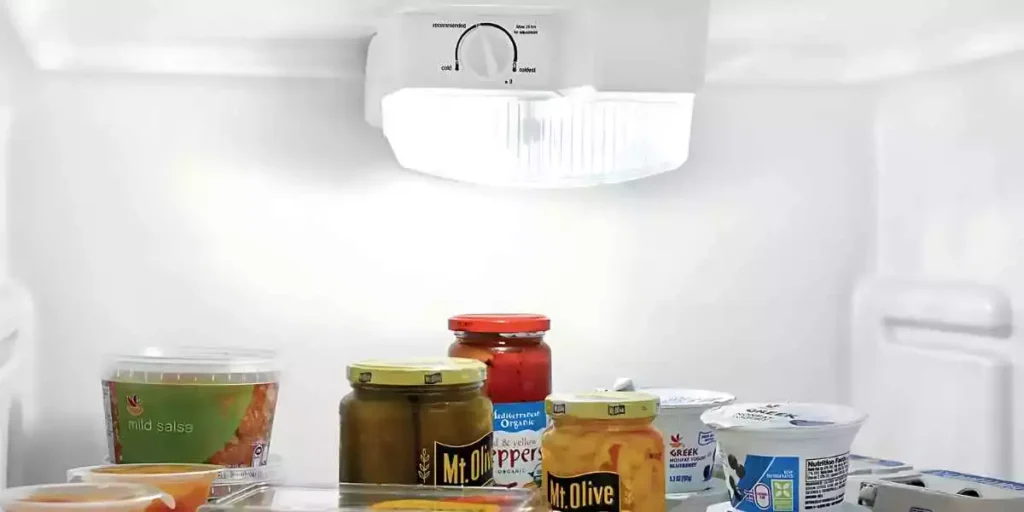
Food Safety Risks:
Fluctuating temperatures can make your fridge a danger zone for food. When the heat goes up, it becomes a breeding ground for bacteria.
These harmful germs love warm places. They can spoil meat, milk, cheese, and some fruits and vegetables.
If it gets too cold, the quality of food can change. It can make your food taste odd or even get ruined.
This way, you might end up with food poisoning. It can make you sick and harm your health.
Shelf Life Shortens:
Your food can’t last as long when the temperature isn’t steady. Fresh things like fruits, vegetables, and milk need to be kept at a certain cool temperature.
It helps them stay fresh and tasty.
If it gets too hot or too cold, these foods can spoil quickly. You’ll have to throw them away. It means you’ll need to shop for groceries more often.
Flavor and Texture Shifts:
Have you noticed how the taste and feel of food can change? That’s because of the temperature.
When it’s not right, it can ruin your food. Fruits and veggies can get frosty. Then, when they thaw, they become mushy and tasteless.
Bread and cookies can also get affected. Moisture from the fridge can make them soggy. It can ruin the crunchy feel of your favorite snack.
Energy Wastage:
A fridge that’s always changing temperature can waste energy. When it gets too warm, the fridge has to work harder to cool down.
This means it uses more power. It can make your bills go up. And it’s not good for our planet.
Damage to Your Fridge:
The fridge can get damaged too. When it gets hot and cold all the time, it can wear out the parts inside.
The compressor, which helps cool the fridge, can break. You might need to fix or replace your fridge. And that can cost a lot of money.
Medicine Storage Issues:
Your fridge can store more than food. It can also hold medicines. But if the temperature isn’t steady, it can harm the medicines.
Some, like insulin shots and vaccines, need a certain temperature. If it gets too hot or cold, these medicines can lose their strength. They might not work well, or even at all.
Tips for Preventing Unwanted Temperature Fluctuations
Make Sure You Close the Fridge Door:
The refrigerator door is like a gate. When open, warm air can rush in, disturbing the cool inside. So, keep the door closed as much as possible.
Opening it too often or leaving it open for too long disrupts the cool temperature. Be quick when you take items out or put items in to keep the inside cool.
Place Your Food Items Correctly:
You need to arrange food in the fridge, like books on a shelf. This means not jamming too much in there. More food means less room for air to move around.
Air needs to circulate so all areas inside the fridge can stay cool. Keep spaces between items to help the cool air travel around easily.
Regularly Check Your Fridge Door Seals:
The door seals are the fridge’s defenders. They prevent warm air from sneaking in. But sometimes they can get damaged or wear out.
This means warm air can come in, and the fridge’s cool temperature can go haywire. Check the seals from time to time. If you see tears or gaps, replace them quickly.
Don’t Put Hot Foods Directly in the Fridge:
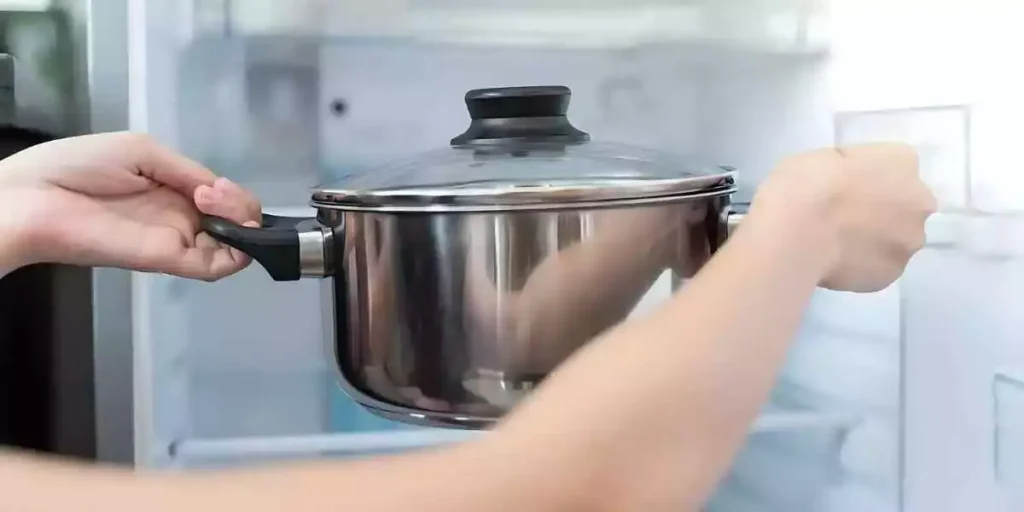
Hot foods are like a summer day. They can heat up the fridge if you put them in straight away.
Always let them cool down to room temperature first. This way, they won’t increase the fridge’s temperature, causing it to fluctuate.
Set the Fridge to the Right Temperature:
Your fridge has a comfort zone. For the fridge part, it’s between 35°F and 38°F. The freezer prefers a chillier 0°F.
Keep the temperature in this range to keep your food fresh and your fridge happy. Use a thermometer to check if you’ve hit the sweet spot.
Keep the Fridge Away from Heat:
Just like you would avoid sitting next to a heater on a hot day, your fridge doesn’t like heat either.
So, avoid placing it near things that give off heat, like the oven, radiator, or direct sunlight.
These can make the fridge work harder to stay cool, messing with the temperature inside.
Clean the Coils and Vents Regularly:
Your fridge’s coils and vents are like its lungs. If dust and debris build up there, it can make it hard for the fridge to breathe and stay cool.
So, give them regular cleaning with a vacuum or a brush to keep the cooling process smooth and the temperature stable.
Keep Air Vents in the Fridge Clear:
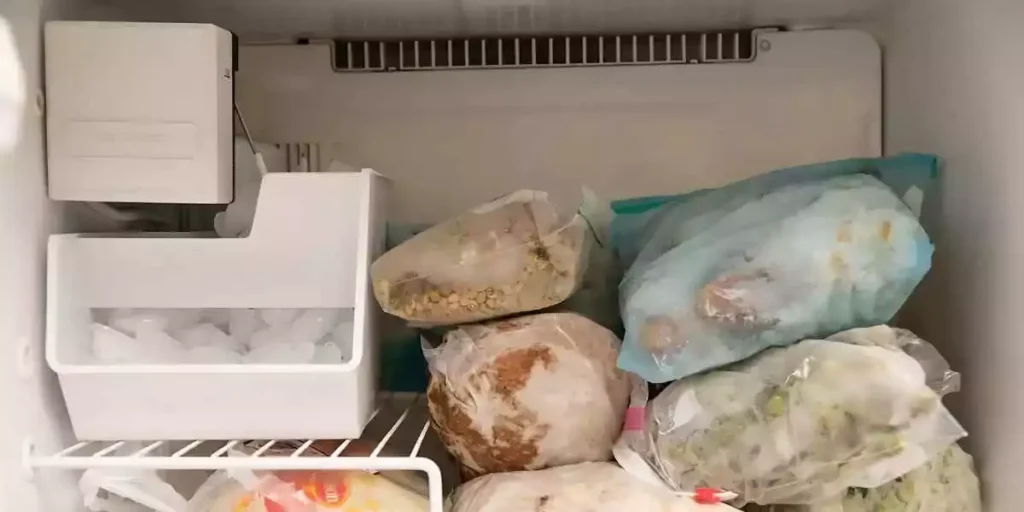
Air vents in the fridge are like little wind tunnels. They need to be clear so cool air can whoosh through.
If they’re blocked by containers or food items, the cool air can’t get around.
This means some parts of the fridge might not get cool enough. So, keep the path clear for the cool air to travel freely.
Use the Energy-Saving Mode:
If your fridge has a button or a dial labeled “energy-saving mode,” use it. This magic mode can help your fridge chill efficiently.
It uses less energy while still keeping the temperature stable. This way, your fridge works smarter, not harder, to keep your food fresh.
Maintenance and Care for Consistent Refrigerator Temperature
Keep the Interior Clean:
Regularly clean the interior of your refrigerator to prevent any buildup of spills, food particles, or odors.
Use mild detergent and warm water to wipe down the shelves, drawers, and walls. Avoid using abrasive cleaners that can damage the surfaces.
Organize and Rotate Food Items:
Properly organize your food items inside the refrigerator, ensuring there is adequate space for airflow.
Place perishable items, such as meats and dairy products, on lower shelves where temperatures are typically cooler. Regularly rotate items to ensure older food is used first.
Check the Thermostat:
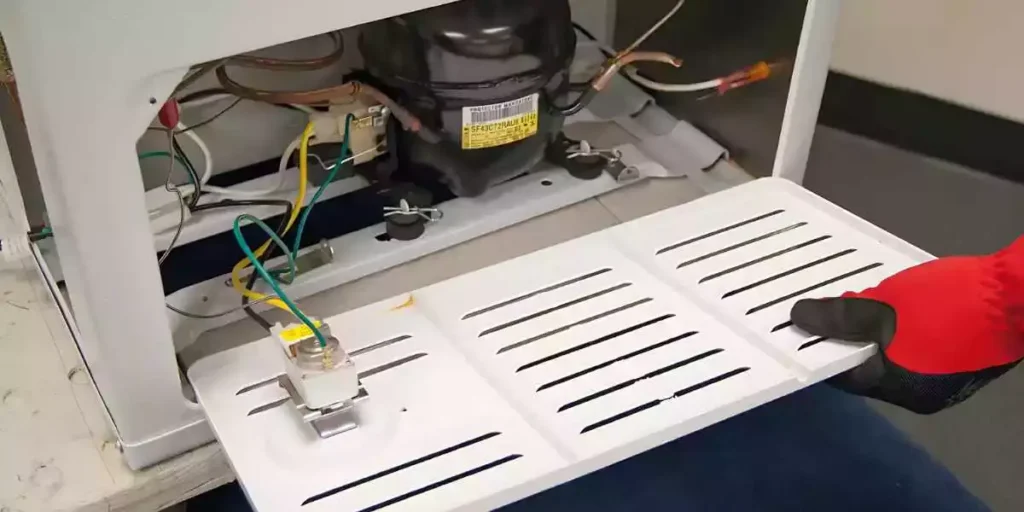
Periodically check the accuracy of your refrigerator’s thermostat. Use a refrigerator thermometer to compare the temperature displayed on the thermostat with the actual temperature inside.
If there is a significant discrepancy, consider adjusting or replacing the thermostat.
Avoid Overloading:
Avoid overloading your refrigerator with excessive amounts of food. Overcrowding restricts airflow and hampers the cooling process, leading to uneven temperatures.
Be mindful of the refrigerator’s recommended capacity and distribute items evenly for optimal cooling.
Regularly Defrost the Freezer:
If your refrigerator has a manual defrost freezer, make sure to defrost it regularly. Ice buildup can interfere with proper cooling and lead to temperature fluctuations.
Follow the manufacturer’s instructions on how to defrost your specific model.
Check for Proper Ventilation:
Ensure that the vents inside the refrigerator are not blocked by food items or containers.
Blocked vents can restrict airflow, hindering temperature regulation. Arrange items in a way that allows air to circulate freely throughout the refrigerator.
Monitor the Surrounding Environment:
Keep an eye on the temperature and humidity levels in the area surrounding your refrigerator.
Excessive heat or humidity can affect the refrigerator’s performance and lead to temperature fluctuations. Consider relocating the refrigerator if necessary.
What are Some Simple Steps to Adjust the Temperature on a Refrigerator without Numbers?
Adjusting the mini fridge temperature without numbers can be done in a few simple steps. Firstly, locate the temperature control dial inside your fridge. Turn it clockwise for colder temperatures and counterclockwise for warmer ones. Keep an eye on any changes in the fridge’s performance to determine the desired mini fridge temperature adjustment.
FAQs About Refrigerator Temperature Fluctuations
How Often Should The Refrigerator Temperature Fluctuate?
Minor temperature fluctuations within a few degrees are normal as the refrigerator works to maintain the desired temperature. However, frequent and significant fluctuations may indicate an issue that requires attention.
Can Temperature Fluctuations In The Refrigerator Affect Food Quality?
Yes, temperature fluctuations can impact food quality. Fluctuating temperatures can accelerate food spoilage, increase the risk of bacterial growth, and cause freezer burn in frozen items.
What Should I Do If I Notice Consistent Temperature Fluctuations?
If you notice persistent temperature fluctuations in your refrigerator, it is advisable to check the thermostat’s accuracy, ensure proper ventilation, and consider professional maintenance or repairs if necessary.
Is It Normal For The Refrigerator Temperature To Change During Different Seasons?
Yes, temperature fluctuations can be more noticeable during extreme weather conditions, such as hot summers or cold winters. The refrigerator may need to work harder to maintain the desired temperature in such situations.
When Should I Be Concerned About Refrigerator Temperature Fluctuations?
You should be concerned about refrigerator temperature fluctuations if they are frequent or significant or if they result in food spoilage or freezer burn. In such cases, addressing the underlying issue or seeking professional assistance may be necessary.
Conclusion
Keep it cool! Your refrigerator’s temperature will naturally fluctuate, but too much can risk food safety and efficiency.
Watch your door usage, avoid overcrowding, and mind where you place your fridge.
Regular maintenance and checks on seals, settings, and cleanliness go a long way in keeping things chill. You’ve got this!

